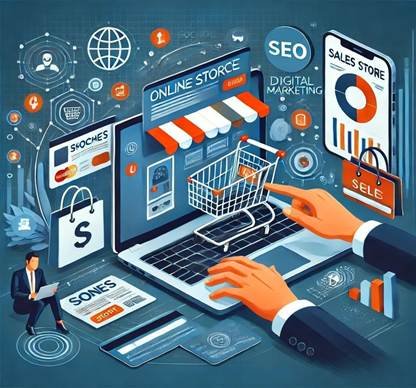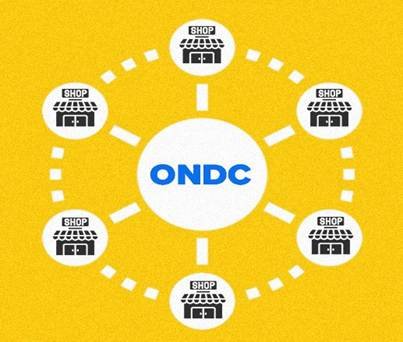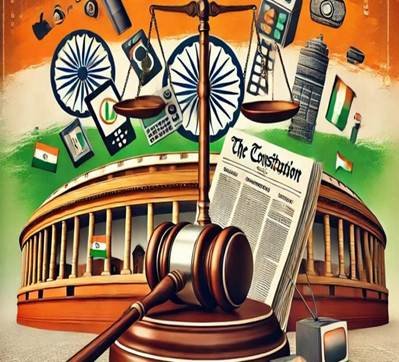
The rise of digital payments in India has shifted how the Micro, Small and Medium Enterprises (MSMEs) carry out their business. Most importantly, this digital business revolution has started from the local departmental stores to handicraft vendors. In the earlier days, online strategies were mostly used by large business houses, but with the help of digital marketplaces in India[1] , these local vendors can reach out to a wider set of audience.
Thank you for reading this post, don't forget to subscribe!In the future, the MSMEs need to transform their business and turn it digital. Most of the customers have started shopping online, which makes MSME e-commerce in India[2] an ardent need. The Government of India has also taken an initiative of ONDC (Open Network of Digital Commerce) where artisans and local vendors can connect with leads from different parts of India.
The Scalability of Digital Marketplaces in India

Digital Marketplace
According to Statista, the e-commerce platform in India is expected to do a business of ₹57.17 billion in the year 2025. This shows the rise of digital marketplaces in India [3] and the changing buying perceptions of the customers. A digital marketplace means where buyers and sellers can connect through a single platform. Think about Amazon, Flipkart, IndiaMART and the new emerging Mavenoak Express which inspires many customers to list their products on the online platform. The local brands will be able to expand their business after connecting with international clients.
Why have e-commerce platforms been thriving in India in the past few years? After the pandemic, data charges have been used, the number of mobile users has increased and UPI-based payment methods have been started. As per the Economic Times[4] , in India, there are about 900 million internet users, and 55% of them are from rural areas. This shows the strategy which the local vendors and artisans can make, that can be implemented for effective business operations.
How MSMEs Are Benefiting from E-Commerce

Traditionally, MSMEs used to work through physical retail or small-scale wholesale networks. However, these methods limited their reach. MSME e-commerce in India[5] has broken these boundaries.
1. Greater Reach and Visibility
A few clicks are all it takes for digital platforms to transact with the customer located in Mumbai or Delhi from the farthest Tier 3 city. This expanded visibility has helped to increase their sales substantially for many artisans, weavers, local food producers, and manufacturers.
2. Lower Entry Barriers
Whereas traditional retail entails capital investment in storefronts, inventory, or marketing, an MSC merely necessitates little investment and minimal capital for setting up a digital store. There are plenty of support mechanisms in place; from onboarding to product listing help to logistics integration, MSMEs have never found it easier to start selling.
3. Real-Time Consumer Data
Selling on online marketplaces for MSMEs[6] allows them to access valuable information such as consumer preferences, peak hours of shopping, and demand from various geographies. These data informed the decision-making procedure, wherein MSMEs can now better settle their prices, inventory, and advertising strategies.
ONDC- Advantage to the MSMEs

The Government of India has started this body of ONDC (Open Network of Digital Commerce)[7] that will promote local businesses in India. Any vendor can list their items and they will have to give less commission as it is a government website. There are listed reasons why it’s an advantage to ONDC:
- Low Commission Charges
At ONDC (Open Network of Digital Commerce)[8] you will be charged less commission for the profits you earn after reaching out to the target audience. This will also lead MSMEs to give competitive prices for their items and get effective profits.
- Improving Local Economy
This body of the Government of India actually helps the local economies by benefitting offline retailers[9] in positioning their products in the digital space. Their understanding of the recent business techniques- digital marketing, online transactions and others can be improved.
- Seamless Transactions
Various types of products are listed on the official website of ONDC (Open Network of Digital Commerce) [10] and customers can handle payments without any hassle or inconvenient glitch.
- Equal Opportunity
The MSMEs can actually reach out to a lot of customers and promote their brand through different marketing strategies. And, from local vendors to well-known startups, everybody can use the data generated from this application about customers.
Offline to Online: The Smooth Transition for Retailers

Many retailers are worried that the new online business may disrupt the traditional way of business. But now, India MSME e-commerce[11] actually stands for the benefit of offline retailers.
Include Benefits:
- Inventory management digitization
- Wider customer base
- Contactless payments and logistics support
- Order tracking in real-time
- Repeat orders through subscription
Retail storefronts can still be operated while utilizing the digital platform for wider reach. For example, a sari store in Varanasi can conduct sales through ONDC or a B2B marketplace in parallel with its walk-in customer base.
B2B Marketplace India: Nurturing Manufacturers and Wholesalers

Besides B2C platforms, B2B marketplaces in India[12] such as Udaan, IndiaMART, and TradeIndia are giving a new lease of life to wholesalers and manufacturers.
These platforms allow bulk buying and selling, lessen internal dependence on middlemen, and widen vendor network access. Hence MSMEs can partner with their vendors, procure raw materials at competitive prices, and even look for global buyers through digital sourcing.
Key Benefits:
- Simplification of the procurement process
- Price and quality transparency
- Quick delivery systems
- Buyer-sellers direct conversations
What are the issues that MSMEs can face in going digital?

There have been technological advancements in the industry, but still, some MSMEs restrict themselves while going digital due to the outlined reasons:
- Reduced digital awareness: The MSME owners or the local vendors have less knowledge of the latest technologies and want to stick to their traditional ways of marketing and promotions.
- Consistent online fraud: There has been a rise in online fraud in the Indian and international markets, which hinders the trust that small vendors can keep in digital mediums to position their brands.
- Slow network in rural areas: To be a part of the digital marketplace in India[13] , the rural areas should have good internet connectivity. Due to consistently reduced data availability, their reach to the external world remains very limited.
- Less working capital: The MSME e-commerce in India needs huge funding to incorporate different kinds of sellers in the ONDC and other platforms. Due to less capital, the small vendors do not have any persistent vision of expanding their business.
Government Support for MSME Digitization

India’s Ministry of MSME and the various State Governments have rolled out a host of schemes aimed at digital transformation. These cover:
- Digital MSME Scheme – for promotion of cloud-based tools and IT adoption
- MSME Champions Portal – such portal and resource for grievance redressal and learning
- TReDS – confers electronic discounting of invoices for better liquidity
- Integration with ONDC – for market access
These initiatives make sure MSMEs can gain the required capital and knowledge to compete regardless of location or sector.
Success: The Indian MSMEs are Winning Online
- Khadi Essentials, a startup of Ayurvedic personal care, flourished enormously with its listing on digital marketplaces like Amazon and Flipkart. These days they are also doing bulk selling on B2B platforms.
- The Northeast India Handloom Co-ops, after getting boarded onto ONDC, started receiving orders from metros and NRIs for authentic indigenous fabric.
- Local food providers, whether highlighting spices from Kerala or dry fruits from Kashmir, are now meeting national demand through MSME online marketplace [14] platforms.
These are not solitary examples that represent a national phenomenon.
The Road Ahead: Digital-First Future
The future of retail in India will be digital, inclusive, and hyper-local. MSMEs will thus not be constrained by geography or marketing budgets. Technology and platforms like digital marketplaces in India [15] and ONDC[16] will instead source these opportunities for them on a wider scale.
The way in which the Indian MSME is gearing up to redefine retail is through the right policy support, technology access, and considerable digital literacy.
Conclusion
Going digital for Indian MSMEs is about growth, resilience, and going beyond out there in the world, besides survival. E-commerce holds benefits transforming any and every kind of business whether through B2C or B2B marketplaces in India[17] , from better profits and customer reach to smooth running of the show and transparent pricing. Digital is the way forward.
With the further evolution of MSMEs e-commerce in India[18] , initiatives such as the ONDC -benefit[19] first-timers as well as those more seasoned offline players. The sooner MSMEs take on this change, the stronger and more competitive they will be.
Let us make a future where every MSME scales up their business in India through online strategies in the competitive industry!

